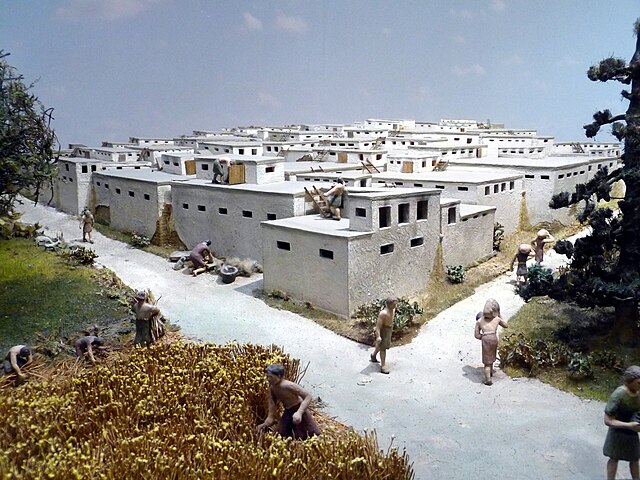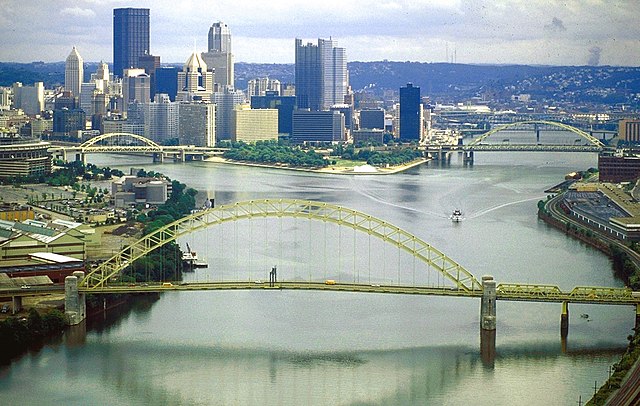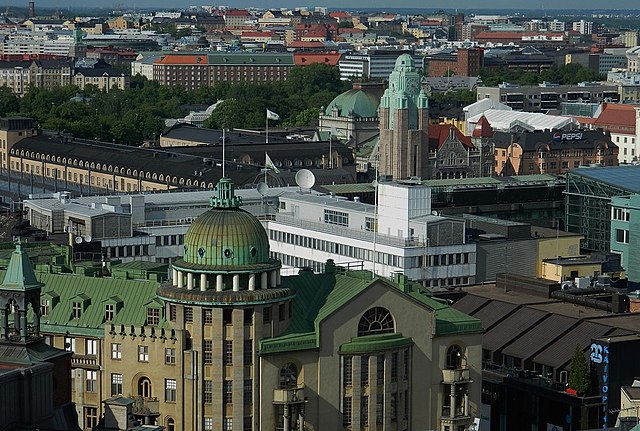A proto-city is a large, dense Neolithic settlement that is largely distinguished from a city by its lack of planning and centralized rule. While the precise classification of many sites considered proto-cities is ambiguous and subject to considerable debate, common examples include Jericho, Çatalhöyük and the mega-sites of the Cucuteni-Trypillia culture. Sites of the Ubaid period in Mesopotamia have also been classed as proto-cities. These sites pre-date the Mesopotamian city-states of the Uruk period that mark the development of the first indisputable urban settlements, with the emergence of cities such as Uruk at the end of the Fourth Millennium, B.C.
A model of Çatalhöyük, a commonly cited example of a proto-city.
The excavated Tower of Jericho
The excavated ruins of Çatalhöyük.
A reconstruction of a Cucuteni-Trypillian site.
A city is a human settlement of a notable size. The term "city" has different meanings around the world and in some places the settlement can be very small. Even where the term is limited to larger settlements, there is no universally agreed definition of the lower boundary for their size. In a more narrow sense, a city can be defined as a permanent and densely settled place with administratively defined boundaries whose members work primarily on non-agricultural tasks. Cities generally have extensive systems for housing, transportation, sanitation, utilities, land use, production of goods, and communication. Their density facilitates interaction between people, government organizations, and businesses, sometimes benefiting different parties in the process, such as improving the efficiency of goods and service distribution.
Palitana represents the city's symbolic role of devotion to the Jain temples.[clarification needed]
Downtown Pittsburgh at the confluence of the Monongahela and Allegheny rivers, which flow into the Ohio River
Kluuvi, a city centre in Helsinki, Finland
Trafalgar Square, a public meeting place in central London





![Palitana represents the city's symbolic role of devotion to the Jain temples.[clarification needed]](https://upload.wikimedia.org/wikipedia/commons/thumb/5/57/Sheth_Motisha_Tonk_01.jpg/640px-Sheth_Motisha_Tonk_01.jpg)


